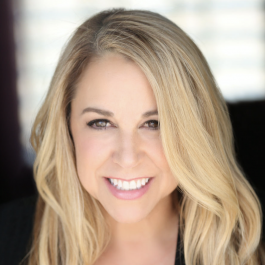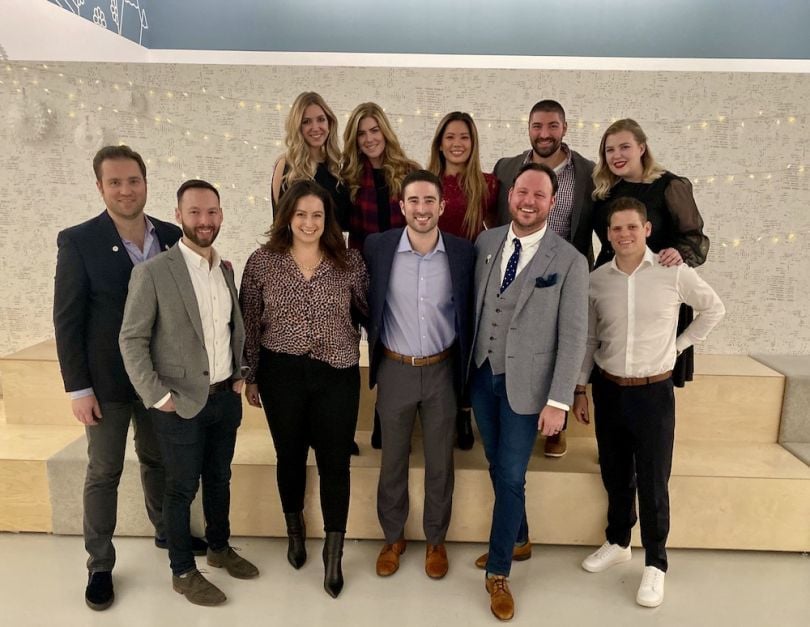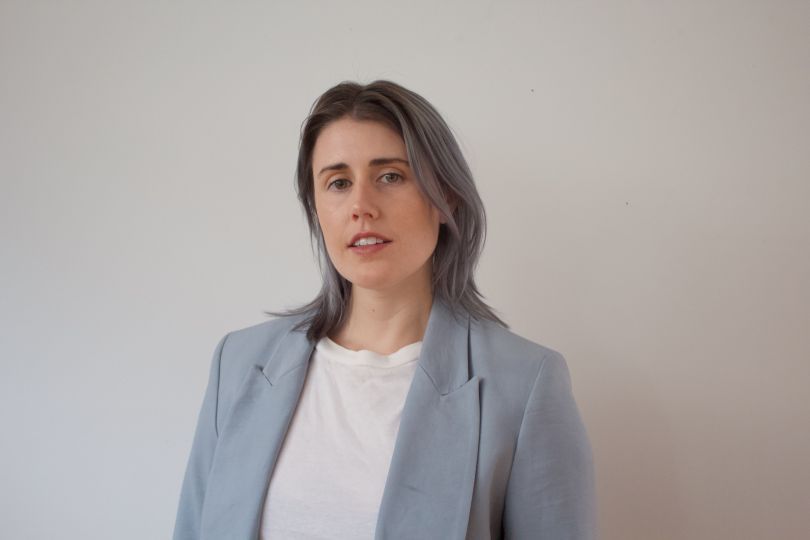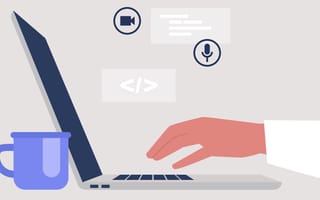While preliminary research plays a vital role in how salespeople ace their product demos, reps that don’t listen to a prospect’s concerns might miss details that could help them close the deal.
“There is no amount of preparation that will overcome not listening to a prospect and being present while they explain their needs,” Daniel Hall, a director of sales and enablement with almost a decade of sales experience, said.
Hall, who works at the video-based marketing platform BombBomb, shared his insight on what makes for a good product demo, and stressed that attentive listening is key. On Hall’s team, account executives are trained to research prospects extensively before a call to get a clear picture of their company, industry and how BombBomb’s solutions could assist them. Then, the salesperson builds an outline of how they predict the call will go.
But as any good salesperson knows, demos don’t always go as planned.
That’s why Hall said the real work begins during the call. Reps should listen deeply to a prospect’s challenges, then personalize the demo to focus on how BombBomb’s solutions can help address a specific need. Below, six companies shared their team’s product demo strategies and provide examples of how they’ve led to closed deals and a happy customers.
Tips for a Successful Product Demo
- Thoroughly research the prospect
- Tailor demos to each customer or prospect
- Practice your demo out loud
- Listen to your prospect's needs
BombBomb
Daniel Hall
DIRECTOR OF SALES AND ENABLEMENT

How do you prepare ahead for a product demo with a prospective customer?
We prepare AEs for two types of prospect conversations. One determines if our product would meet their needs and if they would be a good fit as a customer. The second conversation is an evaluation to see if our product provides a solution for the prospect and determines how we would move forward with them as a customer.
We use a similar approach to prepare for each of these conversations. First, we need to know about a prospect’s company, industry, product and its number of potential users. We blend outbound and inbound prospects into our sales funnel. Some of that work may be accomplished in the prospecting phase of our outbound processes.
Then, we research recent press releases, key stakeholders, fundings and get to know their competition. In step three, we use this information to think critically about their org and how our solution could help them. We then formulate questions that will help us understand their areas of opportunities. Once we have all the information we need, we outline a question path that we could see happening in the call, determine fit and start exploring solutions.
Listen to what a prospect is telling you about their objectives.”
The goal of a product demo is to prove to a potential customer that your product can solve a particular problem for them. How do you go about achieving this goal?
To provide an example, we scheduled a discovery call with a sales leader at a Colorado Springs company. We developed a question outline we felt confident would incite a good conversation to determine fit. On the discovery call, we learned that the leader needed help lifting her email response rate and that our businesses were a good fit for each other.
We linked the leader and her buying committee with an AE for an evaluation call. Then we determined the best path forward for her team to achieve results. She suspected that emails were coming across cold or disingenuous and we felt video could help warm up her message and re-humanize her efforts. Together, with guidance from the customer success team, we developed a goal of a 25 percent response rate; a number the prospect chose because it could drive impact toward reaching her sales goal. The result: she saw a response rate of 70 percent and built a pipeline of over $1.2 million.
What’s the most important piece of advice you’d give to another salesperson who’s looking to master the product demo?
Prepare well but listen more. There is no amount of preparation that will overcome not listening to a prospect and being present while they explain their needs. Focus on them. Listen to what a prospect is telling you about their objectives and the goals of their organization. Then determine if your product could be a solution for them.
Celonis
Susan Price Lucero
STRATEGIC ACCOUNT MANAGER

How do you prepare ahead for a product demo with a prospective customer?
To prepare for a demo, I focus on three things: content, technical and outcome.
For content, I research the customer to gain a deeper understanding of their priorities. On a prospect’s investor relations webpage, you can learn about the company’s strategy and challenges by reviewing the management discussion in the 10-Q SEC filing, listening to quarterly earnings conference calls and reviewing their presentations at recent analyst conferences. I also read recent company press releases, which can sometimes uncover key nuggets in the management quotes, and research my demo participants on LinkedIn.
Technical preparation is making sure the presentation and product demonstration are flawless. I’ll walk through the demo 20-30 minutes prior to the call, opening up multiple tabs in my browser with the flow I intend to use. It’s also important to make sure Zoom is set up to optimize the experience for remote participants; I’ll test it ahead of time. Once the conference call begins, I’ll drag the photo gallery of participants under the camera lens. This creates the illusion of better eye contact and helps me better connect with my customer. Also, I use a ring light to enhance the image, eliminating unflattering shadows.
Lastly, outcome: What do I want from the customer as the outcome of this presentation? Knowing what I want, and stating this goal up front and again at the end, is critical to making sure this presentation further qualifies the customer and moves the sales cycle forward. I’ll write this on a sticky note to make sure I don’t lose sight of the goal during the presentation.
To prepare for a demo, I focus on three things: content, technical and outcome.”
How do you demonstrate to a potential customer that your product can solve a particular problem for them?
One of my customers had spent a lot of time and money with consultants mapping out their ideal processes in a third-party business process mapping tool but had no way of determining if they were adhering to best practices. They struggled with on-time deliveries to their customers. I demonstrated how our “Conformance Checker” could not only identify the root causes of their issues but also the impact it was having on their KPIs.
What's the single most important piece of advice you'd give to another salesperson who's looking to master the product demo?
Practice makes perfect. Early in my career here, my confidence demoing the product improved at a tradeshow, where I had to demo Celonis every 30 minutes for three days straight. When new product capabilities come out, I force myself to practice out loud multiple times until I have internalized the talking points.
PitchBook Data
Sydney Shrum
ACCOUNT MANAGER, MIDDLE MARKET

How do you prepare ahead for a product demo with a prospective customer?
Generally, I look over any background information I have on the person I’m going to be demoing, including what firm they work at, their role, how they got in touch with me/PitchBook and their interest areas. Often, I’ll have some background information on what they are interested in seeing during the demo. For unique cases, I'll prep some searches in the PitchBook Platform ahead of time to make sure we’re efficient with the time we have.
If I don’t have a ton of background on the client, I'll look through old calls with people in similar roles at the firm to see what “aha!” moments they had; that way, I can figure out if it's relevant for this person as well. In order to make a key discovery with the prospect, it’s essential we focus the demo time on what will be most relevant for them.
If you want to master the demo, master the discovery.”
How do you demonstrate to a potential customer that your product can solve a particular problem for them?
The first step is uncovering the layers of a problem that the person is facing. When a prospective client says they need a better source to track private companies, that's something we can fix — but, it's not necessarily the problem.
From there, I ask prospects what process they have right now. Usually, they have no tools or resources, which is also something that needs to be fixed. By not having access to a useful tool, the real problem could be that they missed out on a big investment opportunity because they had no insights into the private markets. This led to their fund underperforming, which caused other problems. Getting the prospective client to that “aha!” moment on the call is great — but ultimately, I want them to ask themselves, “If I don't have this, and others do, what could I be missing out on? What could that mean in the future for the business?”
What's the single most important piece of advice you'd give to another salesperson who's looking to master the product demo?
If you want to master the demo, master the discovery. It's easy to get excited about your product, what you have to offer and all the cool, shiny things that you can show prospects. But just because you have all the things doesn't mean the prospect needs all the things. While it might all be useful to an extent, understanding what would be most valuable and help fill immediate gaps in their current process will ultimately lead to a successful demo.
Yext
Cameron Dudley
SENIOR ACCOUNT EXECUTIVE, MID-MARKET SALES

How do you prepare ahead for a product demo with a prospective customer?
The key to preparing for a product demo is doing the necessary research about the brand. It’s important to understand what their experience looks like today and how your solution will help them achieve their goals. I also spend time personalizing the demo environment to reflect the prospect’s brand, adding the company logo, incorporating branding and weaving in key company facts. I find this helps the prospect better visualize what their experience could look like if implemented.
You need to have a clear understanding of what the prospect cares about and how it will provide value.”
How do you demonstrate to a potential customer that your product can solve a particular problem for them?
The key to a successful demo is successful discovery. You need to have a clear understanding of what the prospect cares about and how it will provide value. Once you understand the value, you can cater the demo to show how your solution will play a role in their success. Additionally, I find it helpful to engage with the prospect during the demo by asking questions like “How do you see this fitting into your business?” or “How is this resonating with you?”
For example, I recently had a demo with the CMO of a California healthcare system. The CMO and marketing manager — who was my champion — both had very different priorities and visions of Yext fitting into their business strategy. It was really important that I prove value to both of them as I was demoing the platform.
What's the single most important piece of advice you'd give to another salesperson who's looking to master the product demo?
Do quality discovery in advance — not only to know the state of the prospect’s current experience but to map out what a future state could look like. This will help any salesperson walk into a demo with a clear plan of action and be able to present a compelling case around the prospect’s challenges.
Being prepared is also critical to keeping the prospect engaged throughout the demo with validating questions about how they see your solution driving value or what their hesitations might be. Some of these questions will come to you during the demo, but doing your research in advance will allow you to have some informed go-to’s in your pocket.

dscout
In a recent product demonstration, dscout Account Manager Susan Nguyen didn’t show her potential client all of the qualitative research platform’s offerings. Why? Nguyen knew the prospective customer was working on a strict timeline. Instead, she focused on providing a tailored solution to their problem. This kind of thinking allows Nguyen and her team to stay nimble and appeal to a broad user base.
How do you prepare ahead for a product demo with a prospective customer?
I do my research. I typically give product demos to prospective customers who both have exposure to dscout and those who might not. It is my responsibility to get new users onto the platform within my existing book of business. The customer will typically share what team they are on, so I’ll start there.
First, I want to understand what that team is working on, what kind of impact they are making and what they are planning for the future. Next, I will focus on the company as a whole. What are their strategic goals?
At the end of the day, an individual wants to feel they are making a direct impact on their company. I want to be able to align how our tools would be able to connect their team’s direction with the company’s strategic goals. By creating that story, I am able to show how our product can be valuable for the prospective customer.
Practice your demo out loud.’’
The goal of a product demo is to prove to a potential customer that your product can solve a particular problem for them. How do you go about achieving this goal?
I tailor each demo to the specific prospect. Prior to the call, I send an email asking if there is something specific I can address during the call. Once the call takes place, it’s important to let the prospective customer have the floor. The key to a great product demo is asking the right open-ended questions to go beyond the surface-level problem and into the root cause.
During the demo, I will reference the email they sent or something they said to illustrate how our tool is the right fit. Recently, I had a prospective customer who had a deliverable she needed to share out to stakeholders that week. I tailored my demo on a specific product we have built for speed and scalability.
In a typical demo, I would show all of our product offerings. But in this case, I knew it was not relevant to her. Due to the tight timeline, we had to work fast to win this project. I gave her a demo of the platform, then I went directly into what next steps needed to take place in order for us to be successful. By laying out a clear plan of action, she was confident our platform was going to be the right choice.
What’s the single most important piece of advice you’d give to another salesperson who’s looking to master the product demo?
Practice your demo out loud. By practicing out loud, you are able to hear how your story flows to determine what changes need to be made. As you continue to practice your demo, you become more confident on the tool. This will successively show clients that you are masters of your product, and in turn, illustrate its ease of use.

CityBase
As a Senior Account Manager for a company that works closely with the public sector, Madeline Allen is able to bring a macro perspective to product demonstrations that clients might not otherwise get. The CityBase team member said she prioritizes deeply listening to the prospect to help her figure out what specific information might be most useful for them to know.
How do you prepare ahead for a product demo with a prospective customer?
I understand the prospect’s expectations and needs by scheduling a pre-demo 5-10 minute call to agree on an agenda and goal of the meeting. This saves everyone time by setting expectations. I research their current vendor, budget and any other interesting points that display our knowledge about them and their needs. I also equip my team internally with my research and make sure each person on the call understands the prospect, goal of the meeting and their role on the call.
A successful demo should be scripted in such a way that it goes beyond just showing the product.’’
The goal of a product demo is to prove to a potential customer that your product can solve a particular problem for them. How do you go about achieving this goal?
A successful demo should be scripted in such a way that it goes beyond just showing the product. The demo should feature aspects of the product that solve the prospect’s problems. Use the demo to actively speak to these pain points throughout.
Be prepared to speak to their not-so-obvious needs and pain points as well. Stick to the agreed-upon agenda, but don’t be afraid to spend more time on areas or issues that come up on the call.
At CityBase, we exclusively work with public sector clients. Our experience solving challenges for local governments across the U.S. makes us a valuable thought partner to other cities and counties, since we bring that macro perspective. For example, I recently leveraged our experience with another client in a CityBase demo in order to address very specific pain points. I spoke to the issues at hand but also revealed other solution-based functionality that alleviates issues down the road they were initially not aware of. This level of preparation and thoughtfulness for the future sealed the deal for a long-term, innovative partnership.
What’s the single most important piece of advice you’d give to another salesperson who’s looking to master the product demo?
It’s not usually about the demo as much as it’s about listening to the prospect, understanding the visible and invisible pain points and creating excitement and urgency around the idea of working together to make their job easier.




